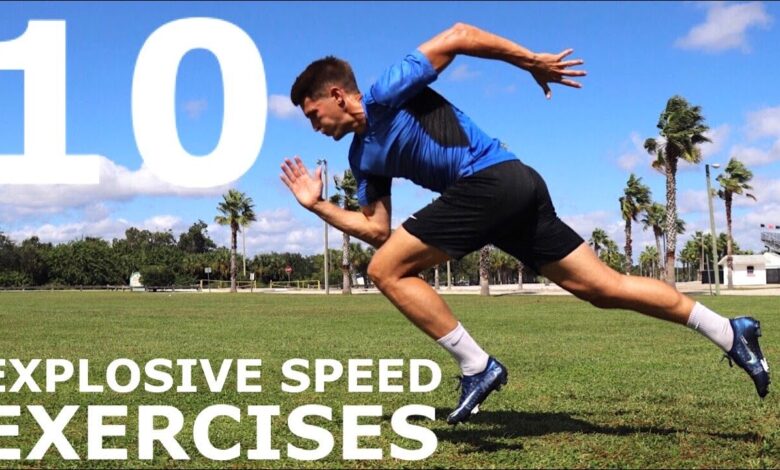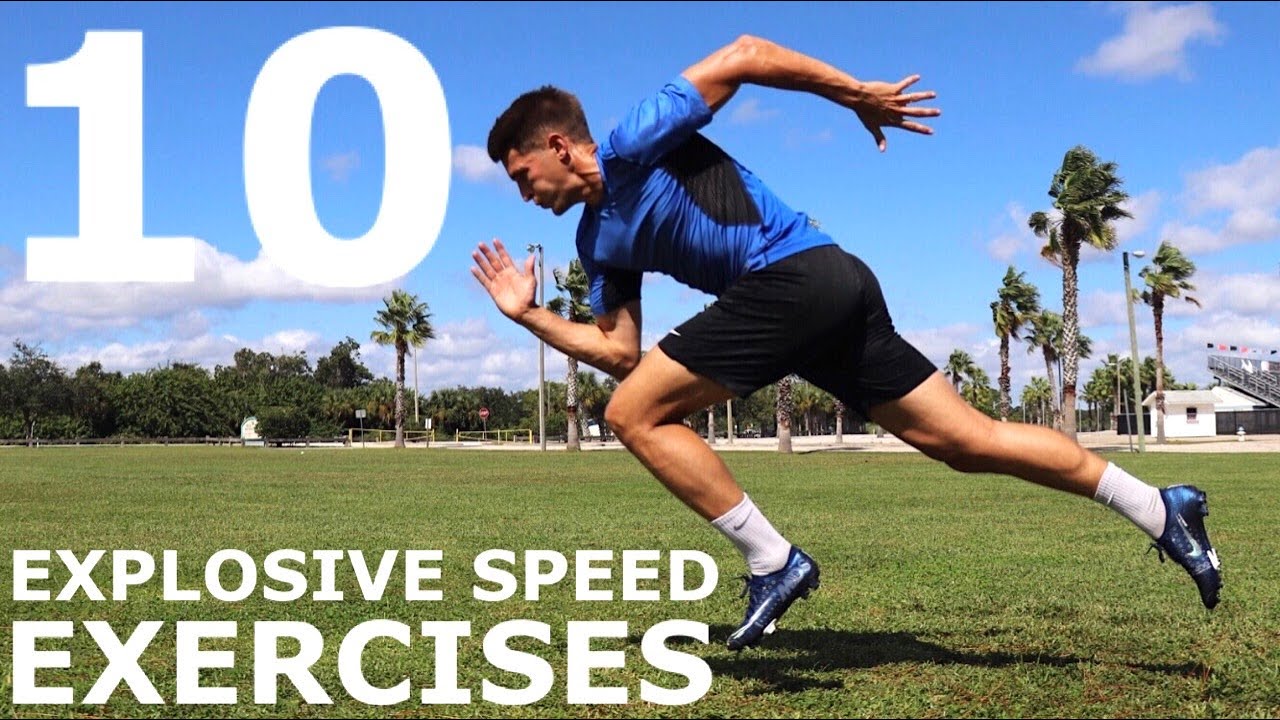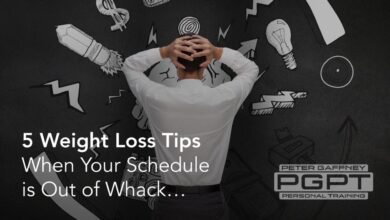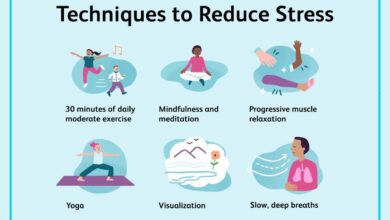
6 Quick Body Boosts to Instantly Ease Tension
6 Quick Body Boosts to Instantly Ease Tension – We all experience stress in our daily lives, but finding ways to manage it is crucial for our well-being. This article explores six simple yet powerful body boosts that can help you quickly alleviate tension and restore a sense of calm.
From deep breathing to mindful movement, these techniques offer a range of options for effectively reducing stress and promoting relaxation.
Whether you’re dealing with the pressures of work, relationships, or everyday life, these body boosts can be easily incorporated into your routine, providing you with a quick and effective way to manage stress and enhance your overall sense of well-being.
Deep Breathing Exercises
Deep breathing exercises are a simple yet powerful technique for reducing stress and promoting relaxation. By consciously controlling your breath, you can calm your nervous system and bring your body and mind into a state of equilibrium.
Benefits of Deep Breathing for Stress Reduction
Deep breathing has numerous benefits for stress reduction, including:
- Reduces Heart Rate and Blood Pressure:Deep, slow breaths help to regulate your heart rate and lower blood pressure, promoting a sense of calm and relaxation.
- Calms the Nervous System:When you breathe deeply, you activate the parasympathetic nervous system, which is responsible for the body’s “rest and digest” response, counteracting the stress response of the sympathetic nervous system.
- Increases Oxygen Intake:Deep breaths allow more oxygen to reach your brain and body, improving alertness and cognitive function while reducing feelings of fatigue.
- Promotes Relaxation:By focusing on your breath, you shift your attention away from stressful thoughts and worries, creating a sense of mindfulness and relaxation.
A Simple Deep Breathing Exercise
This exercise can be done anywhere, anytime, and takes only a few minutes:
- Find a Comfortable Position:Sit or lie down in a comfortable position, ensuring your spine is straight and your shoulders are relaxed.
- Focus on Your Breath:Close your eyes and bring your attention to your breath. Notice the natural rhythm of your inhalation and exhalation.
- Inhale Deeply:Inhale slowly and deeply through your nose, filling your lungs completely. Imagine your breath expanding your belly like a balloon.
- Exhale Slowly:Exhale slowly and completely through your mouth, letting go of any tension or stress with each breath.
- Repeat for 5-10 Minutes:Continue this cycle of deep inhalations and exhalations for 5-10 minutes, focusing on the sensation of your breath.
Incorporating Deep Breathing into Daily Routines
Here are some tips for incorporating deep breathing into your daily life:
- Practice Regularly:Aim to practice deep breathing for a few minutes each day, even if it’s just for a couple of breaths at a time.
- Use It as a Stress Management Tool:Whenever you feel stressed or anxious, take a few deep breaths to calm your mind and body.
- Integrate It into Your Daily Activities:Incorporate deep breathing into activities like walking, driving, or waiting in line.
- Use Visualizations:Imagine your breath as a calming energy flowing through your body, releasing tension and promoting relaxation.
Progressive Muscle Relaxation

Progressive muscle relaxation is a technique that involves tensing and relaxing different muscle groups in your body. This systematic process helps you become more aware of physical tension and learn to release it, promoting relaxation and reducing stress.
Sometimes, after a long day, all I need is a quick way to ease tension. A few deep breaths, a quick stretch, or even a hot bath can work wonders. But sometimes, I crave a little something more, like a tasty treat.
That’s where the 11 healthy pizzas under 400 calories come in. They’re a guilt-free way to satisfy my cravings and keep my energy levels up, which is always a good thing when I’m trying to relax and de-stress.
And who knows, maybe a slice of pizza will even inspire me to try some of those other quick body boosts!
Progressive Muscle Relaxation Technique
Progressive muscle relaxation involves systematically tensing and relaxing different muscle groups in your body. This process helps you become more aware of physical tension and learn to release it, promoting relaxation and reducing stress.Here is a step-by-step guide for practicing progressive muscle relaxation:
- Find a Comfortable Position:Sit or lie down in a comfortable position where you can relax your body. Ensure that your clothing is loose and that you are not too hot or cold.
- Focus on Your Breathing:Take a few deep breaths, inhaling slowly and deeply through your nose and exhaling slowly through your mouth. Pay attention to the sensation of your breath as it enters and leaves your body.
- Start with Your Right Hand:Make a tight fist with your right hand, squeezing as hard as you can. Hold the tension for 5-10 seconds, then slowly release your fist and let your hand go limp. Notice the difference in sensation between tension and relaxation.
- Continue Through Your Body:Proceed through the following muscle groups, tensing and relaxing each for 5-10 seconds.
- Right Forearm:Bend your right arm at the elbow and tense your forearm muscles, as if you were squeezing a tennis ball.
- Right Bicep:Bend your right arm at the elbow and tense your bicep muscles, as if you were lifting a heavy weight.
- Right Shoulder:Raise your right shoulder towards your ear and tense your shoulder muscles.
- Forehead:Raise your eyebrows as high as you can, wrinkling your forehead.
- Eyes:Close your eyes tightly, squeezing your eyelids.
- Cheeks:Clench your jaw and tighten your cheek muscles, as if you were chewing on a tough piece of meat.
- Neck:Tilt your head back and tense the muscles in your neck, as if you were resisting someone pushing your head forward.
- Chest:Take a deep breath and hold it, tightening your chest muscles.
- Back:Arch your back, tightening your back muscles.
- Abdomen:Tighten your abdominal muscles as if you were preparing for a punch.
- Left Hand:Repeat the process for your left hand, forearm, bicep, and shoulder.
- Left Thigh:Straighten your left leg and tense your thigh muscles, as if you were pushing against a wall.
- Left Calf:Point your toes and tense your calf muscles, as if you were standing on your tippy toes.
- Left Foot:Curl your toes and tense your foot muscles.
- Right Thigh:Repeat the process for your right thigh, calf, and foot.
- Repeat the Process:You can repeat the entire process of tensing and relaxing each muscle group several times, or focus on specific areas where you feel the most tension.
- Enjoy the Relaxation:Once you have completed the exercise, take a few moments to savor the feeling of relaxation in your body. Notice how your muscles feel looser and more relaxed.
Muscle Group Tension and Relaxation Phases
| Muscle Group | Tension Phase | Relaxation Phase |
|---|---|---|
| Right Hand | Make a tight fist, squeezing as hard as you can. | Slowly release your fist and let your hand go limp. |
| Right Forearm | Bend your right arm at the elbow and tense your forearm muscles, as if you were squeezing a tennis ball. | Slowly relax your forearm muscles and let your arm go limp. |
| Right Bicep | Bend your right arm at the elbow and tense your bicep muscles, as if you were lifting a heavy weight. | Slowly relax your bicep muscles and let your arm go limp. |
| Right Shoulder | Raise your right shoulder towards your ear and tense your shoulder muscles. | Slowly lower your shoulder and relax your shoulder muscles. |
| Forehead | Raise your eyebrows as high as you can, wrinkling your forehead. | Slowly relax your forehead muscles and let your eyebrows return to their normal position. |
| Eyes | Close your eyes tightly, squeezing your eyelids. | Slowly open your eyes and relax your eyelid muscles. |
| Cheeks | Clench your jaw and tighten your cheek muscles, as if you were chewing on a tough piece of meat. | Slowly relax your jaw and cheek muscles, letting your mouth fall open slightly. |
| Neck | Tilt your head back and tense the muscles in your neck, as if you were resisting someone pushing your head forward. | Slowly relax your neck muscles and let your head fall forward slightly. |
| Chest | Take a deep breath and hold it, tightening your chest muscles. | Slowly exhale and relax your chest muscles. |
| Back | Arch your back, tightening your back muscles. | Slowly relax your back muscles and let your spine return to its natural curve. |
| Abdomen | Tighten your abdominal muscles as if you were preparing for a punch. | Slowly relax your abdominal muscles and let your stomach soften. |
| Left Hand | Repeat the process for your left hand, forearm, bicep, and shoulder. | Repeat the process for your left hand, forearm, bicep, and shoulder. |
| Left Thigh | Straighten your left leg and tense your thigh muscles, as if you were pushing against a wall. | Slowly relax your thigh muscles and let your leg go limp. |
| Left Calf | Point your toes and tense your calf muscles, as if you were standing on your tippy toes. | Slowly relax your calf muscles and let your foot fall back to a neutral position. |
| Left Foot | Curl your toes and tense your foot muscles. | Slowly relax your foot muscles and let your toes uncurl. |
| Right Thigh | Repeat the process for your right thigh, calf, and foot. | Repeat the process for your right thigh, calf, and foot. |
Mindful Movement
Mindful movement involves paying attention to your body’s sensations as you move, without judgment. It’s about being present in the moment, connecting with your breath, and becoming aware of your physical self. This conscious movement can be a powerful tool for stress relief.
Sometimes, all you need is a quick fix to release tension. A few deep breaths, a gentle stretch, or even a mindful walk can do wonders. And speaking of mindful eating, have you ever wondered if can pasta be healthy ?
Choosing whole-wheat pasta and pairing it with plenty of vegetables can make it a nutritious part of your diet. Just remember to keep those body boosts in mind, even when indulging in your favorite carbs!
Benefits of Mindful Movement, 6 quick body boosts to instantly ease tension
Mindful movement can help to reduce stress by:
- Releasing tension:Physical movement, especially gentle stretching and yoga, can release tension in muscles, which can be a major source of stress.
- Calming the nervous system:Slow, deliberate movements, like those found in tai chi or qigong, can help to calm the nervous system, reducing the fight-or-flight response that often accompanies stress.
- Improving focus and concentration:By bringing your attention to your body and breath, mindful movement can help to improve focus and concentration, which can be beneficial for reducing stress in daily life.
- Promoting relaxation:Mindful movement can be a form of meditation in motion, allowing you to let go of worries and experience a sense of calm and relaxation.
Examples of Mindful Movement Activities
Here are some examples of mindful movement activities that can be incorporated into your routine:
- Yoga:Yoga combines physical postures, breathing techniques, and meditation, offering a holistic approach to stress relief.
- Tai Chi:This ancient Chinese practice involves slow, flowing movements and deep breathing, promoting balance, coordination, and relaxation.
- Qigong:Similar to tai chi, qigong involves gentle movements, breathing exercises, and meditation, focusing on energy flow and promoting well-being.
- Gentle Stretching:Simple stretches can be incorporated into your daily routine to release tension and improve flexibility.
- Mindful Walking:Paying attention to the sensations of your feet on the ground, your breath, and your surroundings can transform a simple walk into a mindful experience.
Finding a Mindful Movement Practice That Suits You
- Experiment:Try different activities to see what resonates with you.
- Consider your goals:Are you looking for stress relief, improved flexibility, or increased energy?
- Listen to your body:Choose activities that feel good and don’t cause pain.
- Seek guidance:If you’re new to mindful movement, consider taking a class or working with a qualified instructor.
Hydration
Water is the essence of life, and its role in maintaining our physical and mental well-being cannot be overstated. Proper hydration is crucial for numerous bodily functions, including regulating temperature, transporting nutrients, and flushing out toxins. When our bodies are adequately hydrated, we experience enhanced energy levels, improved cognitive function, and a heightened sense of well-being.
Sometimes, the best way to ease tension is through simple, quick body boosts. A few deep breaths, a quick stretch, or even a brisk walk can make a world of difference. It’s amazing how much our bodies can tell us about our stress levels.
Speaking of bodies, I recently learned some fascinating things about being a registered dietitian, like how much they emphasize personalized nutrition plans. You can read more about these 3 surprising takeaways about being a registered dietitian on this great website.
These insights really make me think about how we can use nutrition to not only fuel our bodies but also manage stress and improve our overall well-being. And of course, don’t forget those quick body boosts! They’re a great way to get back in touch with your body and find some inner peace.
Signs of Dehydration and their Connection to Stress
Dehydration can significantly impact our physical and mental health, particularly in stressful situations. When we are dehydrated, our bodies struggle to function optimally, leading to various symptoms that can exacerbate stress levels. Here are some common signs of dehydration and their connection to stress:
- Fatigue and Exhaustion:Dehydration can lead to fatigue and exhaustion, making it harder to cope with stress. When our bodies lack sufficient water, they struggle to maintain energy levels, leading to feelings of weariness and decreased motivation.
- Headaches:Dehydration is a common trigger for headaches, especially tension headaches. Headaches can intensify feelings of stress and make it difficult to focus and concentrate.
- Muscle Cramps:Dehydration can cause muscle cramps, which can be particularly troublesome during stressful situations. Muscle cramps can contribute to feelings of tension and discomfort, making it challenging to relax.
- Mood Swings and Irritability:Dehydration can impact brain function, leading to mood swings, irritability, and difficulty concentrating. These changes in mood can amplify feelings of stress and make it harder to manage challenging situations.
- Constipation:Dehydration can contribute to constipation, which can further increase stress levels. Constipation can cause discomfort and bloating, making it difficult to feel relaxed and at ease.
Importance of Adequate Water Intake
Maintaining adequate hydration is essential for both physical and mental well-being, especially during stressful times. When we are properly hydrated, our bodies can function optimally, enabling us to cope with stress more effectively.Here are some key reasons why consuming adequate water throughout the day is crucial:
- Improved Energy Levels:Adequate hydration helps maintain optimal energy levels, enabling us to handle stressful situations with greater resilience.
- Enhanced Cognitive Function:Water is vital for brain function. Proper hydration supports cognitive processes such as focus, concentration, and memory, making it easier to manage stress and make clear decisions.
- Reduced Muscle Tension:Dehydration can contribute to muscle tension, which can exacerbate stress. Adequate water intake helps alleviate muscle tension and promote relaxation.
- Improved Mood Regulation:Dehydration can impact mood regulation, leading to feelings of irritability and anxiety. Adequate water intake helps stabilize mood and promote a sense of calm.
- Optimal Bodily Functions:Water plays a crucial role in various bodily functions, including regulating temperature, transporting nutrients, and flushing out toxins. Proper hydration ensures these functions operate efficiently, supporting overall well-being.
Healthy Snacking: 6 Quick Body Boosts To Instantly Ease Tension
You might not think about it, but what you eat can have a big impact on your stress levels. When your blood sugar levels fluctuate, it can trigger your body’s stress response, making you feel anxious, irritable, and even fatigued.
The Impact of Blood Sugar Fluctuations on Stress Levels
Blood sugar fluctuations can significantly impact your stress levels. When you eat sugary or processed foods, your blood sugar levels spike quickly. This rapid rise is followed by a sudden drop, leading to a cascade of hormonal changes. Your body releases stress hormones like cortisol and adrenaline to try to stabilize your blood sugar, which can leave you feeling jittery, anxious, and unable to focus.
Healthy Snacks for Sustained Energy and Stable Blood Sugar
Here are some examples of healthy snacks that provide sustained energy and help stabilize your blood sugar:
- Fruits and Vegetables:Apples, bananas, berries, carrots, and celery are excellent sources of fiber and natural sugars, providing a gradual release of energy.
- Nuts and Seeds:Almonds, walnuts, pumpkin seeds, and sunflower seeds are packed with healthy fats, protein, and fiber, keeping you feeling full and satisfied for longer.
- Yogurt:Greek yogurt is a good source of protein and calcium, which can help stabilize blood sugar levels.
- Whole-Grain Crackers with Hummus:Whole-grain crackers provide complex carbohydrates, while hummus offers protein and healthy fats.
Importance of Avoiding Processed Foods and Sugary Drinks
Processed foods and sugary drinks are often high in refined carbohydrates and added sugars. These foods cause rapid spikes in blood sugar, followed by a dramatic crash, leading to feelings of stress, anxiety, and fatigue.
“Processed foods and sugary drinks are often high in refined carbohydrates and added sugars. These foods cause rapid spikes in blood sugar, followed by a dramatic crash, leading to feelings of stress, anxiety, and fatigue.”
Ending Remarks
By incorporating these six quick body boosts into your daily routine, you can effectively manage stress, promote relaxation, and enhance your overall well-being. Remember, taking care of your physical and mental health is essential for a fulfilling life. Embrace these simple yet powerful techniques and experience the transformative benefits of stress reduction.






